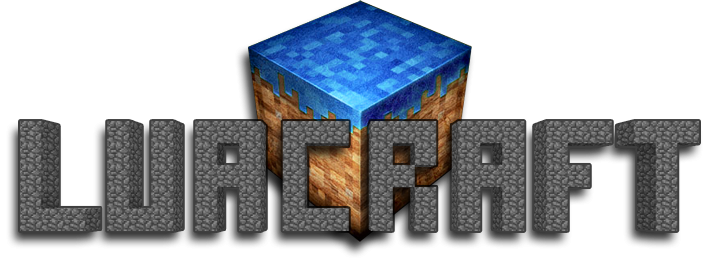Using Lua Scripts in .NET with LuaInterface
Hi, Habrahabr!
This small post was born after I decided to find out how to run Lua scripts in conjunction with playing in C # (or in another .NET-language). using the LuaInterface library. I was impressed by the ease of this interface compared to lua.h in C ++

')
C # at a decent level, have a basic understanding of the basics of programming, as well as connecting links in a project in Visual Studio
Sources (with all dll, of course) are posted at the end of the post
The first thing to do is to connect LuaInterface.dll to our project. Just add a link to the .dll file. If you still do not know how this is done, you can find manuals on the Internet. Also required to connect luanet.dll
Small educational program
LuaInterface - a library for easy integration between Lua and CLR
Lua is a very light scripting language. Here is his analysis
What are the scripts for - excerpt from my other post
Now that we have a project with a connected LuaInterface, go to the code!
We mainly write the .cs file
The main class of this library is Lua.
It is very easy to declare constants. It is done this way.
Anything can act as a value - a number, a string, even classes and structures (how to work with them will be further)
In Lua, you can register a function from C #
One of the most pleasant aspects of LuaInterface, which may surprise those who use Lua along with C ++, is that you can register an object of a class and then call various functions “directly” in the script.
That is, you can do this:
C #
And after that make a Lua script with the following content:
You can execute Lua code (with all registered functions and constants) in two ways.
The first is straight from C #
Second - from file
(Both methods return the object [] value - this is what the Lua script returns after it is executed)
To handle exceptions — errors that might pop up during script execution, you should use a LuaException err
To call a method from Lua, you must run a script, retrieve the method, and execute it when necessary.
Example
Also in Call (params object [] args) you can pass input parameters for the function
The same trick works with values, but instead of LuaFunction we use string, int, double, and so on.

Lua Symbols

Love2D - one of the most popular engines on Lua

Minecraft mod for Lua

https://bitbucket.org/Izaron/luaforhabr/src
Source
This small post was born after I decided to find out how to run Lua scripts in conjunction with playing in C # (or in another .NET-language). using the LuaInterface library. I was impressed by the ease of this interface compared to lua.h in C ++

')
What you need to know
C # at a decent level, have a basic understanding of the basics of programming, as well as connecting links in a project in Visual Studio
Start
Sources (with all dll, of course) are posted at the end of the post
The first thing to do is to connect LuaInterface.dll to our project. Just add a link to the .dll file. If you still do not know how this is done, you can find manuals on the Internet. Also required to connect luanet.dll
Small educational program
LuaInterface - a library for easy integration between Lua and CLR
Lua is a very light scripting language. Here is his analysis
What are the scripts for - excerpt from my other post
Hidden text
If you have developed large projects (for example, large-scale games), have you noticed that with each new hundred lines of code, the compilation is slower?
The game creates more weapons, more dialogues, more menus, more etc.
One of the main problems arising in connection with innovations is to maintain the innumerable number of weapons and badges rather difficult task.
In a situation where a friend / boss / teammate request to change the dialogue or add a new type of weapon takes too much time, you have to resort to some measures - for example, recording all this garbage in separate text files.
Almost every game developer has ever made a level map or dialog in a separate text file and then read them. Take at least the simplest option - Olympiad tasks in computer science with an input file
But there is a way, head down - using scripts.
Solution to the problem
“Okay, for such cases a regular file with a description of player characteristics is enough. But what to do if in a rapidly developing project almost every day you have to slightly change the logic of the main player, and, therefore, compile the project many times? ”
Good question. In this case, scripts come to the rescue, holding exactly the logic of the player with all the characteristics or some other part of the game.
Naturally, it’s best to keep the player’s logic in the form of a programming language code.
The first thought - to write your own interpreter of your scripting language, is thrown out of the brain in a few seconds. The logic of the player is definitely not worth such terrible costs.
Fortunately, there are special libraries of scripting languages for C ++, which take a text file as input and execute it.
One such scripting language Lua will be discussed.
The game creates more weapons, more dialogues, more menus, more etc.
One of the main problems arising in connection with innovations is to maintain the innumerable number of weapons and badges rather difficult task.
In a situation where a friend / boss / teammate request to change the dialogue or add a new type of weapon takes too much time, you have to resort to some measures - for example, recording all this garbage in separate text files.
Almost every game developer has ever made a level map or dialog in a separate text file and then read them. Take at least the simplest option - Olympiad tasks in computer science with an input file
But there is a way, head down - using scripts.
Solution to the problem
“Okay, for such cases a regular file with a description of player characteristics is enough. But what to do if in a rapidly developing project almost every day you have to slightly change the logic of the main player, and, therefore, compile the project many times? ”
Good question. In this case, scripts come to the rescue, holding exactly the logic of the player with all the characteristics or some other part of the game.
Naturally, it’s best to keep the player’s logic in the form of a programming language code.
The first thought - to write your own interpreter of your scripting language, is thrown out of the brain in a few seconds. The logic of the player is definitely not worth such terrible costs.
Fortunately, there are special libraries of scripting languages for C ++, which take a text file as input and execute it.
One such scripting language Lua will be discussed.
Now that we have a project with a connected LuaInterface, go to the code!
LuaInterface - the basics
We mainly write the .cs file
using LuaInterface; The main class of this library is Lua.
Lua lua = new Lua(); Constant declaration
It is very easy to declare constants. It is done this way.
lua[] = ; lua["version"] = 0.1; lua["name"] = "YourName"; lua["test"] = 200; lua["color"] = new Color(); lua["my"] = this; Anything can act as a value - a number, a string, even classes and structures (how to work with them will be further)
Registration of functions
In Lua, you can register a function from C #
lua.RegisterFunction( Lua, this, ); lua.RegisterFunction("puts", this, typeof(Program).GetMethod("Test")); Registration of classes and structures
One of the most pleasant aspects of LuaInterface, which may surprise those who use Lua along with C ++, is that you can register an object of a class and then call various functions “directly” in the script.
That is, you can do this:
C #
class LuaDebug { // private void Print(string message, ConsoleColor color) { Console.ForegroundColor = color; Console.WriteLine(message); } public void Log(string message) { Print("Log: " + message, ConsoleColor.White); } public void Warning(string message) { Print("Warning: " + message, ConsoleColor.Yellow); } public void Error(string message) { Print("Error: " + message, ConsoleColor.Red); } public string ConsoleRead() { return Console.ReadLine(); } } // ... lua["Debug"] = new LuaDebug(); And after that make a Lua script with the following content:
str = Debug:ConsoleRead() -- Debug:Log(" ") Debug:Warning(" : " .. str) Debug:Log(" !") Debug:ConsoleRead() -- Lua code execution
You can execute Lua code (with all registered functions and constants) in two ways.
The first is straight from C #
lua.DoString() lua.DoString("Debug:Log('Hello, Habr!')" + "\n" + "Debug:ConsoleRead()"); Second - from file
lua.DoFile(file) lua.DoFile("script.lua") (Both methods return the object [] value - this is what the Lua script returns after it is executed)
Exception Handling
To handle exceptions — errors that might pop up during script execution, you should use a LuaException err
try { // Lua, lua, lua } catch (LuaException err) { // } Calling methods from Lua
To call a method from Lua, you must run a script, retrieve the method, and execute it when necessary.
Example
lua.DoFile("file.lua") LuaFunction func = lua["func"] as LuaFunction; // function func() {...} end func.Call(); Also in Call (params object [] args) you can pass input parameters for the function
The same trick works with values, but instead of LuaFunction we use string, int, double, and so on.
Additional materials
- For tables in LuaInterface, the LuaTable class is provided , it is registered in the Lua class object as a normal variable, and writing variables to the table itself is not much different from writing variables to the Lua object itself.
- There is also a LuaDLL class used for “low-level” work with Lua (from lua.h). There is little sense from him, and hardly anyone uses it seriously
ExampleLuaDLL.lua_open(); LuaDLL.lua_createtable(luaState, 1, 1);

Lua Symbols

Love2D - one of the most popular engines on Lua

Minecraft mod for Lua

https://bitbucket.org/Izaron/luaforhabr/src
Source
Source: https://habr.com/ru/post/197262/
All Articles